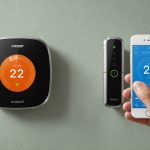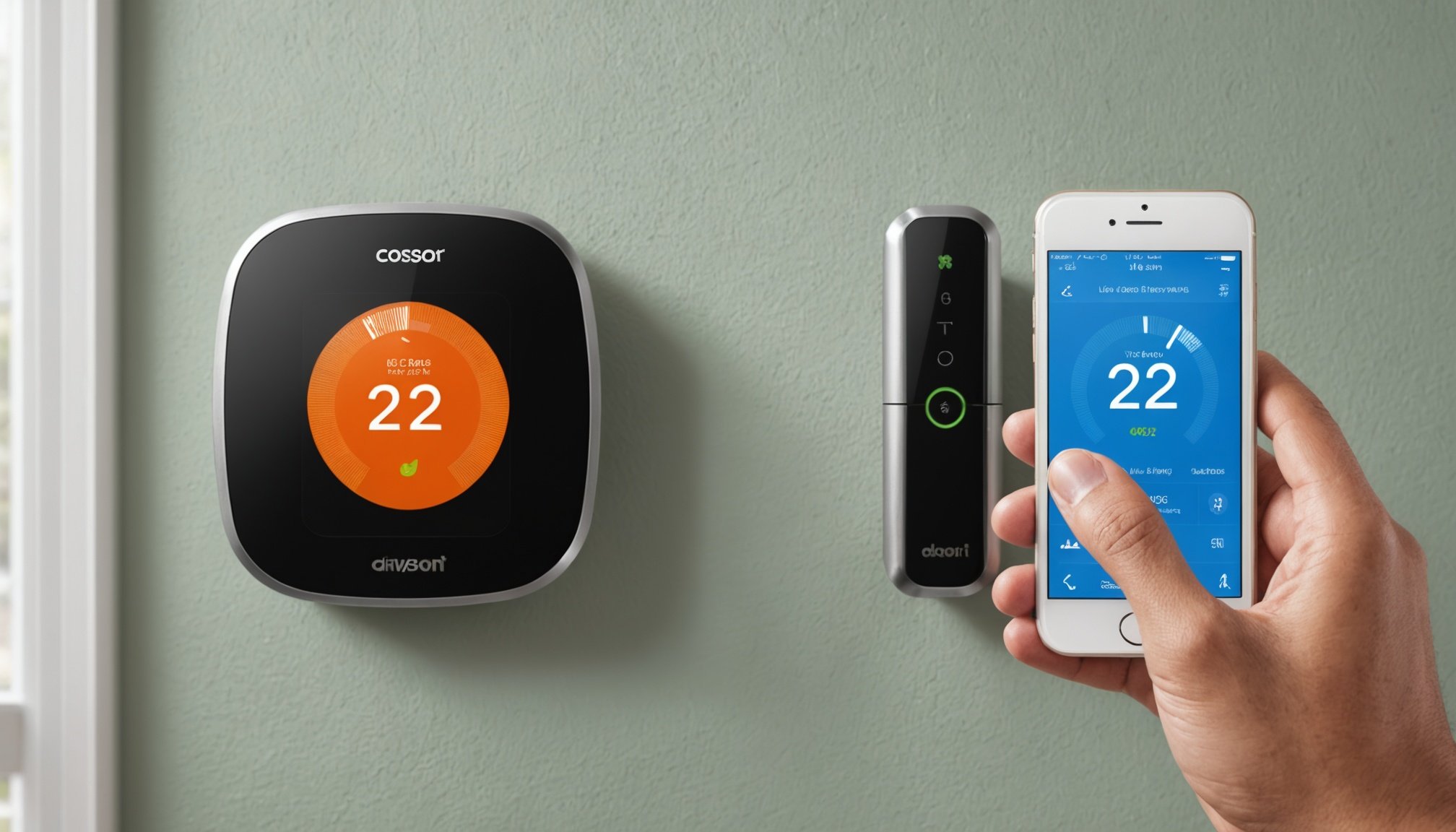Unlock Ultimate Energy Savings: A Guide to Linking Your Smartphone with a Smart Thermostat
In the era of smart home automation, one of the most effective ways to optimize your home’s energy efficiency is by integrating a smart thermostat with your smartphone. This guide will walk you through the process, highlighting the benefits, steps, and tips to ensure you get the most out of your smart thermostat.
Why Smart Thermostats Are a Game-Changer
Smart thermostats are more than just a convenient upgrade from traditional thermostats; they are a key component in smart home energy management. These devices learn your habits and adjust the temperature of your home accordingly, ensuring both comfort and energy savings.
Additional reading : Unlock ultimate energy efficiency in your smart home: innovative smartphone tactics for savings
“Smart thermostats can lower the heat while you’re away and warm the home before you return,” explains Shawn Crowle from Camrose Energy. “Many users report savings of up to 15% on their heating and cooling costs!”[4].
How Smart Thermostats Work
Smart thermostats work by using advanced algorithms and sensors to understand your daily routines and preferences. Here’s a breakdown of how they operate:
Also to read : Elevate your smartphone to a smart garden control center: a comprehensive step-by-step guide
Learning Your Habits
Smart thermostats, such as those from Nest or ecobee, use machine learning to adapt to your schedule. For instance, if you leave for work every morning at 8 AM, the thermostat will automatically lower the temperature to save energy.
Remote Control
With the ability to control your thermostat via your smartphone, you can adjust the temperature from anywhere. Whether you’re at work or on vacation, you can ensure your home is at the perfect temperature when you return.
Energy Monitoring
Many smart thermostats come with energy monitoring features that provide real-time data on your energy consumption. This helps you identify areas where you can improve energy efficiency and make informed decisions to reduce your utility bills.
Connecting Your Smart Thermostat to Your Smartphone
Connecting your smart thermostat to your smartphone is relatively straightforward. Here’s a step-by-step guide using the UWG4/AWG4 floor heating thermostat as an example:
Step-by-Step Connection Guide
- Access the Menu: Press the ≡ button in the top right corner of your thermostat and select “Wi-Fi / Weather”[1].
- Select Your Wi-Fi Network: Choose the name of your Wi-Fi network from the list. If your network is not visible, click on the option to refresh the list.
- Enter Network Key: Input your network key and press ✔ to confirm.
- Establish Connection: Wait for the thermostat to establish a connection to your Wi-Fi network. If it fails, refer to the troubleshooting section.
- Name Your Thermostat: Give your thermostat a name, such as “Bathroom,” and confirm with ✔.
- Create an Account: Enter your email address to create an account and press ✔ to continue.
- Set Up Weather Location: Enter the postal/zip code where the thermostat is located to set your weather location.
- Finalize Connection: Once all steps are completed, your thermostat will be connected to the server and ready for use.
Integrating with Home Automation Systems
Smart thermostats can be integrated with various home automation systems, enhancing their functionality and convenience.
Google Home and Alexa Integration
Smart thermostats like Nest and ecobee can be seamlessly integrated with Google Home and Alexa. This allows you to control your thermostat using voice commands, making it easier to adjust the temperature without lifting a finger.
from seam import Seam
seam = Seam()
devices = seam.devices.list(device_type="nest_thermostat")
# Control your Nest thermostat using voice commands
print("Turning on the heating...")
seam.devices.control(device_id=devices[0]['device_id'], action='heat_mode')
Seam API for Advanced Control
For more advanced control, the Seam API provides a universal interface to connect and control various smart devices, including thermostats. Here’s how you can use it to control an ecobee thermostat:
from seam import Seam
seam = Seam()
# Authorize your Seam workspace against your ecobee account
webview = seam.connect_webviews.create(accepted_providers=["ecobee"])
# Send the Connect Webview URL to your user and complete the login flow
print(webview.url)
# Adjust the current heating and cooling settings
devices = seam.devices.list(device_type="ecobee_thermostat")
seam.devices.control(device_id=devices[0]['device_id'], action='heat_mode', set_point=20)
Practical Tips for Maximizing Energy Savings
Here are some practical tips to help you maximize energy savings with your smart thermostat:
Schedule Your Temperature Adjustments
- Automate Your Schedule: Use the scheduling feature to automate temperature adjustments based on your daily routine.
- Geofencing: Some smart thermostats support geofencing, which adjusts the temperature based on your location.
Use Energy Monitoring Features
- Track Your Energy Use: Regularly check the energy monitoring data to identify areas of high energy consumption.
- Adjust Settings Accordingly: Make adjustments to your thermostat settings based on the data to optimize energy efficiency.
Maintain Your Thermostat
- Regular Updates: Ensure your thermostat software is up-to-date to benefit from the latest features and improvements.
- Clean the Sensors: Keep the sensors clean to ensure accurate temperature readings.
Comparative Analysis of Popular Smart Thermostats
Here’s a comparative analysis of some popular smart thermostats to help you choose the best one for your needs:
| Feature | Nest Thermostat | ecobee SmartThermostat | UWG4/AWG4 Floor Heating Thermostat |
|---|---|---|---|
| Learning Capability | Yes, learns your habits | Yes, learns your habits | No, manual scheduling required |
| Remote Control | Yes, via Google Home app | Yes, via ecobee app | Yes, via dedicated app |
| Energy Monitoring | Yes, detailed energy reports | Yes, detailed energy reports | Limited energy monitoring |
| Integration | Google Home, Alexa | Google Home, Alexa, Apple HomeKit | Limited integration options |
| Price | Around $200 | Around $250 | Around $150 |
| Additional Features | Geofencing, energy alerts | Geofencing, energy alerts, built-in Alexa | Floor heating specific features |
Real-Life Examples and Anecdotes
Here are a few real-life examples of how smart thermostats can make a significant difference:
The Busy Professional
Sarah, a busy professional, installed a Nest thermostat in her home. She set up the geofencing feature, which automatically lowers the temperature when she leaves for work and raises it when she returns home. This simple setup has saved her around 10% on her heating and cooling bills.
The Energy-Conscious Homeowner
John, an energy-conscious homeowner, opted for the ecobee SmartThermostat. He uses the energy monitoring feature to track his energy consumption and makes adjustments accordingly. He has noticed a significant reduction in his energy bills and feels more in control of his home’s energy use.
Linking your smartphone with a smart thermostat is a simple yet powerful step towards optimizing your home’s energy efficiency. With the right smart thermostat and a bit of setup, you can enjoy both comfort and significant energy savings.
“Smart home energy management integrates technology to help you monitor, control, and optimize your energy consumption,” emphasizes Shawn Crowle. “It’s a small step that can have a significant impact over time!”[4].
By following the steps outlined in this guide and implementing the practical tips provided, you can unlock ultimate energy savings and create a more comfortable, efficient, and sustainable home. So why wait? Start your smart home journey today and see the difference for yourself.











